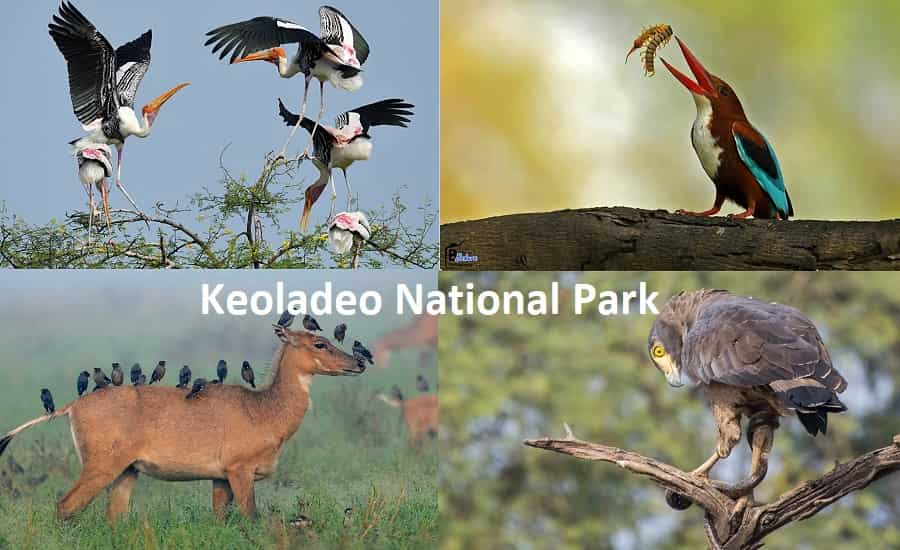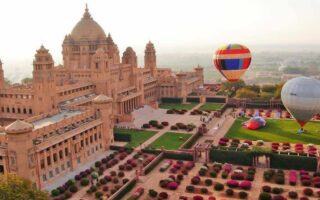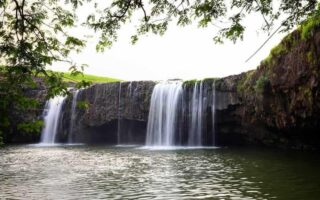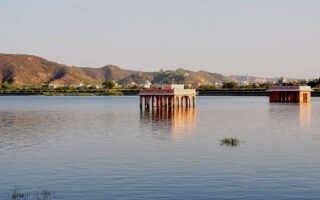Visiting a national park is like going back to an era when humans used to live in close proximity with nature. This visit fills our nostrils with the smells of nature, our eyes with the beauty of blooming plants, our ears with the chirping of birds, and our brains with a sense of accomplishment; of spending time with Mother Nature and relishing all that we gain from deploying our senses to absorb the juices of nature. All this and many more experiences can be obtained by visiting Keoladeo National Park, one of the richest habitats of birds, animals, and plants in the state of Rajasthan.

Location
The Keoladeo National Park is situated in the city of Bharatpur.
History
The sanctuary derives its name from a Keoladeo (Shiva) temple located within its perimeter. Established more than two centuries ago, this sanctuary served as a hunting ground to the rulers of Bharatpur, and later for the British Viceroys during the time of British rule in India. Formally designated as a bird sanctuary in 1976, Keoladeo was declared as a national park in 1982, followed by its declaration as a World Heritage Site in 1985.
Geography
The park, governed by Rajasthan Tourism Development Corporation, is spread over an area of 29 square kilometres. One-third of the total area is classified as a wetland, where diverse species of plants are found. The uplands, on the other hand, are occupied mostly by species of tall grasses as well as trees and shrubs which are spread unevenly. There are a total of 379 species of plants in the park, out of which 96 are classified as wetland species. Around 10 square kilometres of the total park area can be defined as wetland, with water level ranging up to 2 metres during the months of monsoon and lesser during other months. During summer season, the whole park dries up.
The park is home to several species of macro-invertebrates and serve as the food for birds and animals in the sanctuary. The park provides an ideal habitat to herons, cormorants, storks, migrant ducks, etc. Landbirds are found in large numbers in the park. One can watch greater spotted eagle, short-toed eagle, imperial eagle, etc., at the park. Around 27 species of mammals are found in the park, including sambars in few numbers, Indian mongoose, civets, jackals, hyenas, etc. Forty-three species of fishes are found in the park, out of which six are resident breeds while 37 enter through the water stream. During monsoons, as many as 65 million fishes are said to occupy the park. Seven species of turtles, five species of lizards, seven of amphibians and thirteen of snakes enrich the park.
Earlier, Siberian crane was found in abundance in the park, numbers of which have drastically decreased due to extensive hunting by nomads. Cattle were previously granted entry in the park for grazing and were later prohibited by the park management. While the grass causes blockage in the water streams, the management has still not revoked the ban, as it raises a conflict against the laws.
What to Do
Bird watching is the most common activity of the visitors, ranging from all age groups and arriving from different parts of the country and the world. Visitors can hire a bike or bicycle at the park entrance to move around in the park. During monsoons, it would be better to hire a Tonga or ride on a boat. The rickshaw puller also acts as a guide who can resolve your queries and provide in-depth information about the park geography, flora and fauna. A relatively luxurious option to explore the bird sanctuary is to board the Palace on Wheels, a tourist train service run by IRCTC and covers the sanctuary in its route.
Eat, Drink, Collect
Food and snacks are available within the park. Visitors can buy a meal from the canteen located near the second gate of the park or the Bharatpur Forest Lodge.
Accommodation is available at the Bharatpur Forest Lodge, Shanti Kutir, Dak Bungalow and Circuit Office. There are several resorts and 3 star hotels located close to the park to accommodate the visitors.
Best Time to Visit
The best time to visit Keoladeo National Park during the winter season, i.e., from October to February. The park remains open from sunrise to sunset throughout the year. Visitors from India are charged Rs. 25/- per person as entry fee, while those coming from foreign countries have to pay Rs. 200/- per person as entry fee.
How to Reach
The nearest airport to Keoladeo National Park is situated in Agra at a distance of around 56 kilometres. The closest international airport is located in Delhi, at a distance of approximately 184 kilometres. The city of Bharatpur falls on the Delhi-Bombay rail route and enjoys excellent connectivity with many major stations falling under this route.
Inside the city, visitors have an array of public transportation methods to choose from. The best way is to hire a bicycle and explore the park and other parts of the city, as you will not be dependent on the driver’s vigor and cross any traffic jams that may cause delay in reaching from one place to another.


